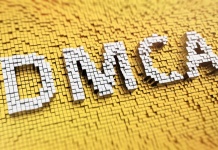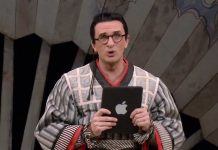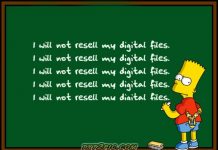“Tired of DRM and customer log-in schemes used to sell you more stuff? Simply enter your library card number…once…and start reading, from your library, for free. If you don’t have a library card…just sign up for one with the app!”
 The TeleRead take: The Library Simplified project aims to “employ technology, innovation in library policies, and the full range of library offerings to deliver a better experience to more patrons.”
The TeleRead take: The Library Simplified project aims to “employ technology, innovation in library policies, and the full range of library offerings to deliver a better experience to more patrons.”
Funding will come from the New York Public Library and the Institute of Museum and Library Services.
The project, inspired by the goals of Readers First, a group working toward more usable digital tech for patrons, could benefit countless libraries.
Current partners include the Alameda County Library, the Boston Public Library, the Brooklyn Public Library, the Chattanooga Public Library, the Cincinnati Hamilton County Public Library, the Cuyahoga County Public Library, the Kent District Library, NYPL, Santa Clara County Public Library and the Sacramento Public Library.
Library Simplified will use two kinds of approaches to allow library books to be displayed on patrons’ machines.
1. The first is an “HTML5 browser-based reader that can be used on any browser connected to the internet, optimized both for tablets and smartphones. Checking out an e-book to read in the browser will result in the book being checked out to a server controlled by the library with the digital rights management (DRM) certificate being tied to the library server for the lending period. When a user requests a page in the book, that page will be rendered on-the-fly on the server, and sent to the user’s browser. When a user moves to a new page, the service copy of the previous page will be deleted from the server so no more than one page is available at any given time, but offering all the features of a standard e-reader including searching the full text of the book.”
Great. But how about the digital divide angle? It’s a shame that there can’t be a way to enjoy offline reading, the way OverDrive’s browser-based e-reading app allows (specifics here). Lack of extended offline reading means that people without decent Internet connections at home, including many of the kids from low-income families participating in President Obama’s K-12 e-book initiative, will be at a disadvantage.
2. Library patrons, however, can also use a second alternative even if it may be more complicated. It lets them run their own DRM-capable reading apps and—if the project works out—seamlessly check out books without all the usual hassles.
The system will tap into vendors’ middleware and books will be served to special URLs “to tell those apps to access the books directly, without any special steps. This leaves the possibility open for a set of Library Simplified native apps, but makes immediately actionable the seamless checkout of ebooks to smartphones, tablets, and some dedicated readers without needing to build specific apps for each platform.”
But I still wonder how seamless things will really be in the end. My frustration isn’t with Library Simplified. It’s with the vendors who’ve made such a bloody mess of the e-book industry with proprietary DRM and other gotcha.
Image credit: CC-licensed. By C. S. Imming.

































If libraries put out books without any form of DRM protection or means of being returned, they haven’t seen the worst yet of big publishers refusing to do business with them. ALL publishers will refuse to do business if the libraries are essentially giving away free books to be uploaded to any pirate site or shared indiscriminately.
As to the “torture” of checking out books. Really? I click on my library icon, I click on log in, my password program fills it in, then I click again, and I’m ready to check out books. That’s courtesy of Overdrive and my state library program.
I then put the chosen books on my Nook, and I’m ready to read. When I finish, I click a return button on my Overdrive program, and it’s gone.
If that’s too much work for you, I suggest you need vitamins and a reality check on what torture really is.
@Marilynn, David’s right about Adobe DRM. I messed up something with the ADE authorization on my computer, and now I can’t authorize new devices which means I can’t directly load library books to my Kobo. I don’t know what I did or how to fix it, and to say that Adobe customer service has been unhelpful would be an understatement. Fortunately, I’ve got my Kindle, and most books are available in that format, but I’d be screwed if the Kobo were my only device.
Thanks for your feedback, Marilynn, but Adobe DRM and the like can be tricky – especially since there are limits on how many devices can be registered. The challenges of DRM will vary from machine to machine. I’m delighted you’re luckier than I’ve been. Beyond that, keep in mind that the NYPL project does not eliminate means to enforce expiration. Of course, business models exist under which libraries could pay upfront for unlimited rights from interested writers. David
@ Marilynn
Overdrive already has this type of service, actually. It’s voluntary, and some publishers do participate.
Overdrive has thousands of books with no DRM and no checkout periods. Their list includes most of the Project Gutenberg list, but is not limited to it. Most people don’t seem to know about it and it doesn’t show up in the normal search, you have to search that catalog separately.